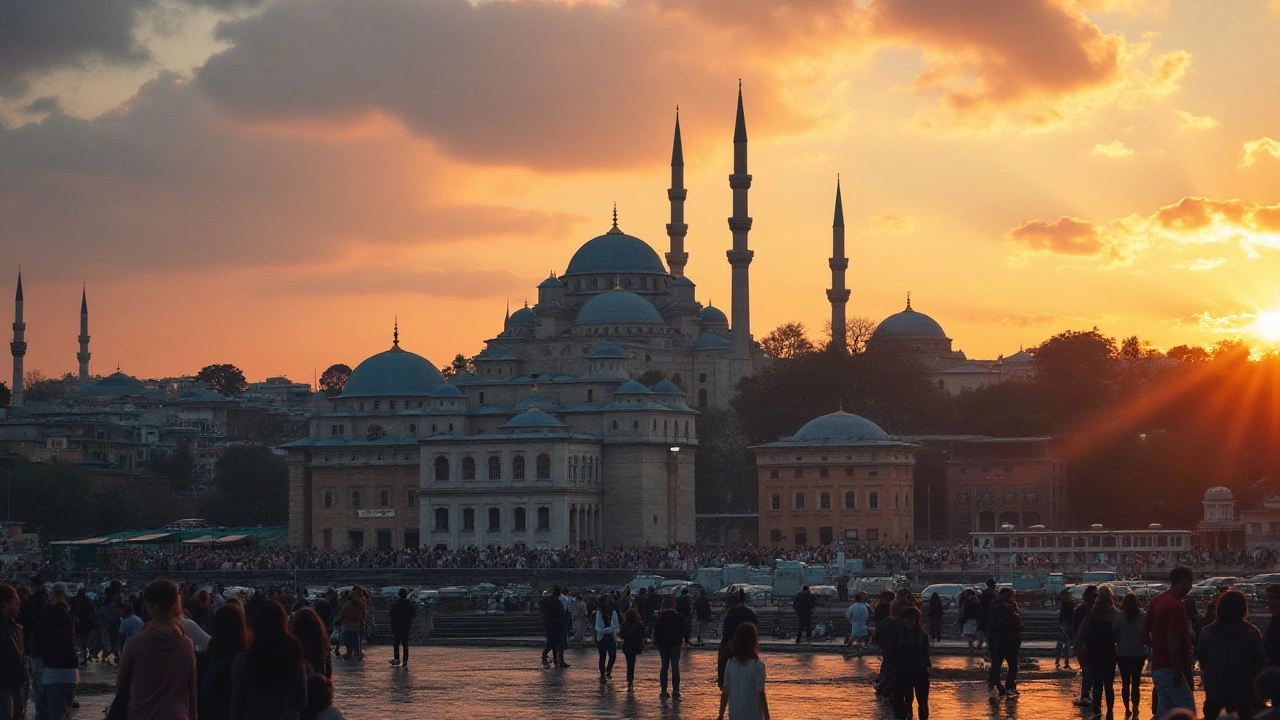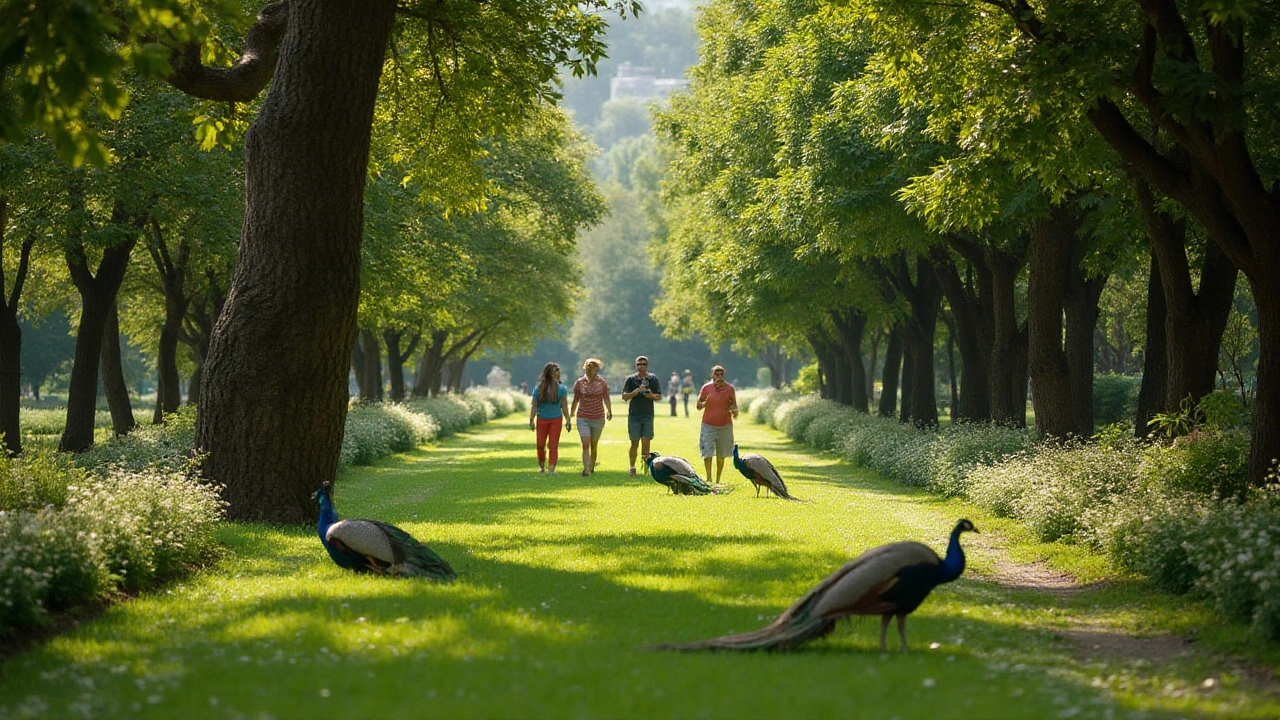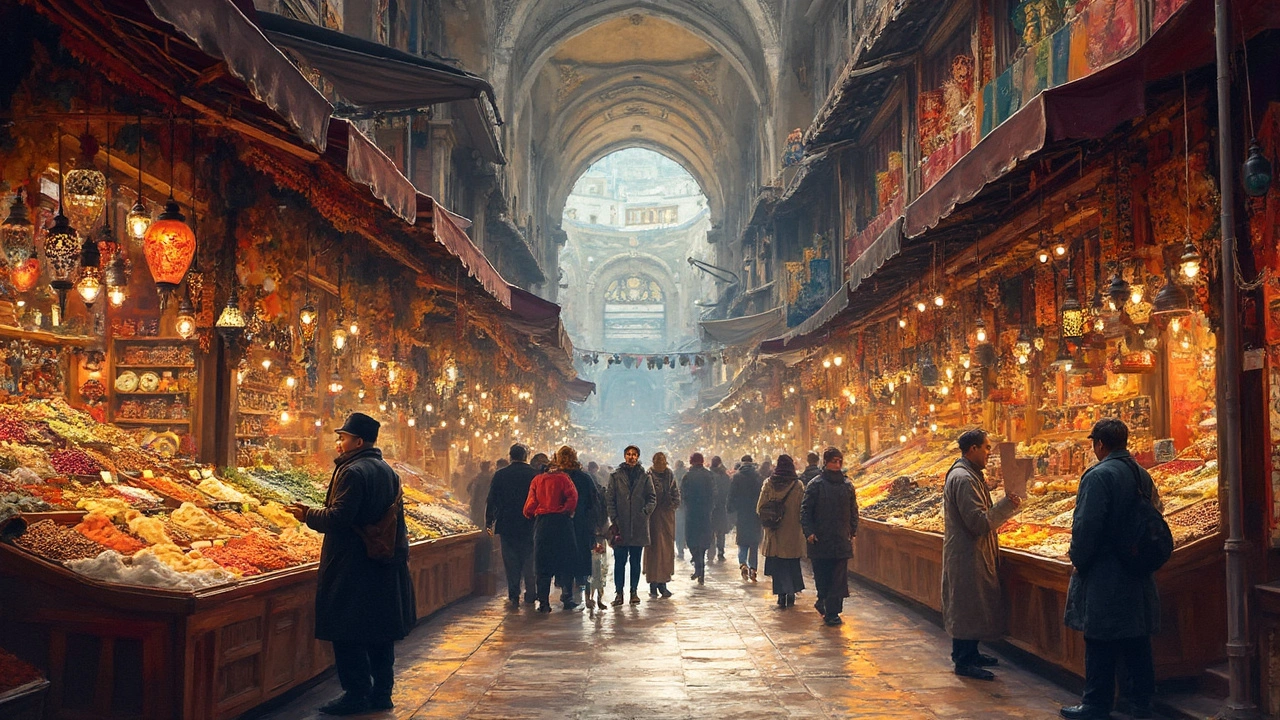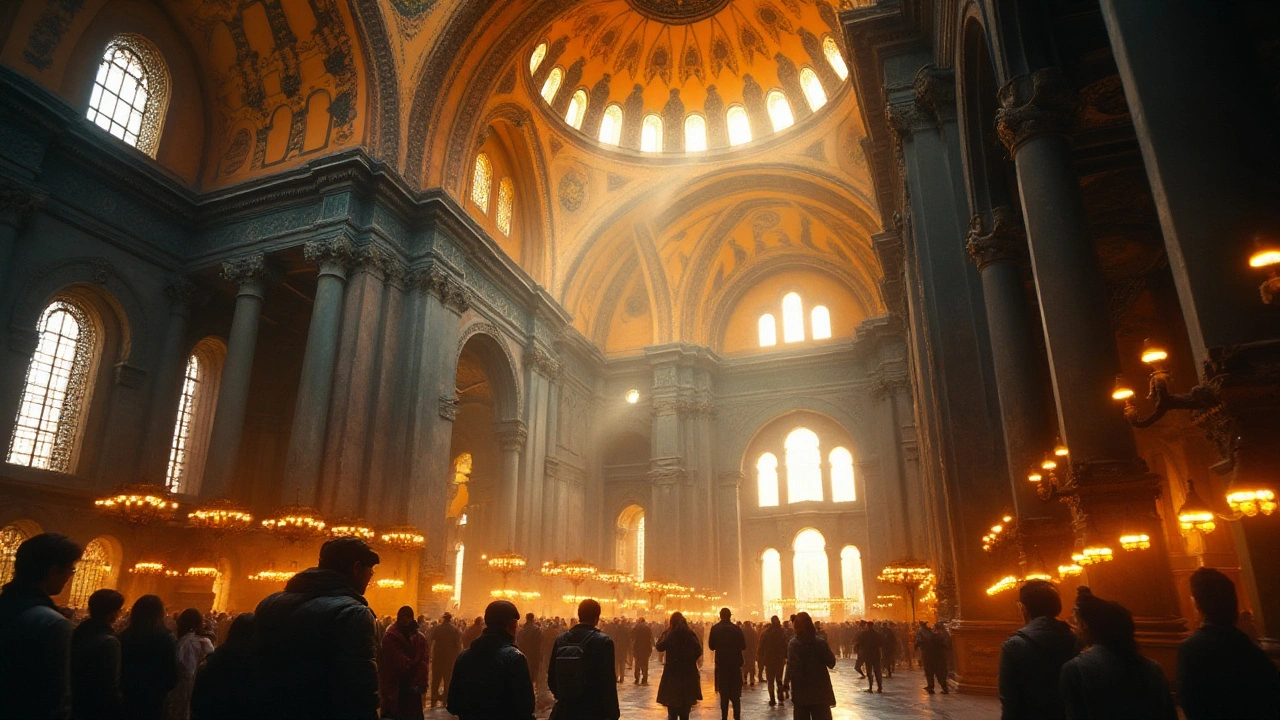Exploring Istanbul's Topkapi Palace: An Intimate Journey Through History

In the heart of Istanbul, the Topkapi Palace stands, not just as a monument of grandeur but as a whisper of the past that beckons with intrigue and mystery. This isn't just another tourist attraction; it's a place where the ghosts of empires past linger in the air, their stories etched into the very stones.
The palace's allure is irresistible to anyone who finds themselves entranced by the blend of myth and history. Let me take you on a personal journey through its marble corridors, past the heavy curtains that once concealed the deepest secrets of sultans and concubines, into the lush gardens that echo with the footsteps of those long gone.
Cultural influences are palpable here, each room a testament to the diverse tapestry of the Ottoman Empire. From the opulent harem, steeped in both scandal and sensuality, to the panoramic views that stretch out over the Bosphorus, Topkapi Palace offers an intimate glimpse into a world where power and desire collided spectacularly. Whether you're a resident of Istanbul or a curious traveler, this guide will help you uncover the palatial secrets that make Topkapi a living, breathing story.
- The Allure of Topkapi Palace
- Hidden Histories and Untold Tales
- The Sensual Secrets of the Harem
- Breathtaking Gardens and Views
- Visitor Tips and Local Insights
The Allure of Topkapi Palace
Every time I step through the gates of the Topkapi Palace, I am overcome with the intoxicating allure that this historic fortress exudes. Situated proudly in the heart of Istanbul, this legendary attraction is more than just an architectural marvel; it's a living saga of splendor, seduction, and sheer power that has endured through the centuries. Let me take you into a world where the very air seems to vibrate with whispers of old sultans, their dreams, fears, and desires blending into the fabric of the city. As the former seat of the Ottoman Empire, the palace is a treasure trove of fascinating narratives and lost secrets waiting to be rediscovered.
The history of Topkapi Palace is as expansive as the gilded halls themselves. Built in the 15th century under Sultan Mehmed II, the Conqueror, it remained the political heart of the Ottoman Empire for over four centuries. The palace has seen the rise and fall of mighty sultans, cunning viziers, and beguiling concubines who shaped history behind its ornate screens. Wandering through its age-old courts and chambers, you can almost feel the pulse of former empires lingering in the heavy air. Outside the sprawling palace walls, the frenetic energy of contemporary Istanbul seems worlds away from the tranquil, leafy courtyards within.
Yet, the allure of Topkapi is not merely about its historic charm. It is about the forbidden allure of opulence and power, a place where power was both displayed and withheld in equal measure. Each jewel-encrusted dagger on display in the Treasury rooms, every lush tapestry clinging to the walls, reflects a story of ambition—of desire that could topple empires. As Turkish author Elif Shafak once wrote, "Every corner of Topkapi is full of questions, some rhetorical, some bursting with curiosity." Here at the crossroads of Istanbul's past and present, the palace not only reflects the Ottoman achievements but also embodies the intricacies of its multicultural legacies and the seductive power dynamics that define them.
"Every corner of Topkapi is full of questions, some rhetorical, some bursting with curiosity." - Elif Shafak, Turkish author.
The atmospheric gardens that surround the palace invite you to venture deeper into the hidden whispers of time. These verdant sanctuaries, overlooked by lonesome pavilions with majestic views of the Bosphorus, served not only as places of leisure but as powerful tools of diplomacy, showcasing the dominance and influence of the empire. Here is where treaties were cemented, marriages arranged, and whispers of rebellion stifled under the shade of ancient plane trees. As the sun dips below the minarets on the horizon, I can almost hear the rustle of sumptuous robes yesterday’s evening breezes. But more than mere history, the gardens and corridors of Topkapi speak of humanity’s universal longing for beauty, longing, and the transcendent. They’re places where the past and present briefly collide and linger in a fragrant dance of jasmine-scented breeze.
The pull of Topkapi extends beyond its storied past and manifests in the present through its role as a vibrant cultural touchpoint for locals and visitors alike. Meticulously maintained by the city's caretakers, this magnificent site is accessible to anyone yearning for a deeper understanding of Turkish history and its manifold cultural expressions. As twilight gathers, the delicate play of light over centuries-old tiles invokes a certain magic—a hum of energy that Istanbul welcomes eagerly. A stroll through these grounds, steeped in history and heartache, leaves one reflective and inspired, tempted by an indeterminate desire to ponder life's mysteries. To know Topkapi is to realize that palatial history, much like life itself, is a tapestry woven with hidden desires and bold actions throughout the ages.
Hidden Histories and Untold Tales
Walking into the hallowed halls of Topkapi Palace is much like stepping into the textured pages of an ancient manuscript, filled with enigmatic stories that refuse to be silenced by time. Here, history breathes and whispers through intricately carved wooden doors and gleaming domed ceilings. It becomes an intimate dance between the seeker and the secrets that once thrived in hushed breaths and stolen glances. The palace had been the beating heart of the Ottoman Empire, but what intrigues me most are the unseen narratives, the lives of those who walked these corridors in silence yet left vivid imprints on its fabric.
Imagine the soft shuffle of slippered feet along marbled floors, the delicate rustle of silk robes in the opulent quarters of the Harem, where some of the palace's most guarded tales unfolded. The Harem was not merely about indulgence; it was a complex world of politics and intrigue, a microcosm of power where alliances were forged and hearts scarred. I find myself drawn to the stories of the concubines, women whose lives were a tapestry of fervent desires and profound loneliness. They bore no titles, yet held sway over sultans with a mere glance, their influence echoing through the empire. It is in the untold emotional labor of these women that the true essence of the palace's sensual history lies.
Even the sultans, the omnipotent rulers, were not immune to the vulnerabilities hidden within these gilded confines. Murad III, for instance, was known for his insatiable appetites, yet it was said that his greatest pleasures were found not in conquest, but in the intimate company of his trusted poet-musician, Yahya. A forbidden love that dared to bloom within the austere traditions of the courtyard. The air still sings with the passion of their sonnets, clandestine echoes of desire amid the grandeur of power. As La Fontaine once quoted, "The world belongs to those who can dream," and dream they did, crafting a hidden history within the folds of imperial opulence.
The Janissaries and Their Silent Revolts
Beyond the intimacies of the Harem, the shadows in the palace's secret corridors were just as potent, extending into the clandestine affairs of the Janissaries. These elite guards were the sultan's most formidable force, yet they were not above the silent acts of rebellion that painted the palace in shades of tension. The Janissaries, formidable as they were in warfare, also held power in their subtle resistance. Their revolts were often born not in screaming battles, but in simmering silence, festering through the barracks like a smoldering ember demanding attention. One can almost see it, feel it—the whispered plans, the shared, knowing glances that flew under the radar yet spoke volumes about discontent brewing beneath the surface.
The renowned historian Halil İnalcık once aptly remarked, "Topkapi is a mirror; it reflects more than it conceals and shows more than it pretends." Yet, these reflections are often the hardest to decipher, for the palace's myriad stories are deeply intertwined with the cultural and political currents that swept through its gates. The tales are multifaceted—an intricate weave of power dynamics and human complexities that played out behind the walls that many saw as impenetrable.
As I wander these imperial halls today, I am in awe of the lives that breathed life into these stones—their passions, their fears, their dreams that dared to reach beyond the sprawling courtyards. The times may have changed, but the emotions remain, etched into the very walls of Istanbul's Topkapi Palace. They remind us that even the most titanic forces of history are composed of individual human stories, each contributing its own unique stroke to the grand tapestry of time.

The Sensual Secrets of the Harem
Stepping into the harem of the Topkapi Palace in the heart of Istanbul is more than crossing a threshold; it's like plunging into a world draped in silks, where whispers of centuries past brush the skin like a lover's caress. The harem was a world both forbidden and desired, a haven of opulence secluded from prying eyes. Here, intrigue reigned supreme, where power was spun like delicate threads from the seemingly soft, but fiercely resolute women within.
As outsiders, we often view the harem with a mixture of curiosity and fantasy, yet it served as a microcosm of the Ottoman Empire's vast cultural mosaic. A place where the sultan's favored had to master the art of seduction and diplomacy, all in the languid confines of this gilded cage. Imagine the sweet tension of a whispered conversation in the plush lounge, the tantalizing smell of incense that still lingers in the tapestries, or the delicate sounds of a lute echoing through the marble corridors.
Much has been mythologized about the harem, where the sultan's concubines lived and vied for favor, but the heart of its enigma lies in its complexity. It was home to hundreds of women—wives, servants, and those seeking ascension. A tale of power and passion was woven into every corner, leaving stories that unravel slowly, like the most exquisite piece of silk caught in a gentle breeze. The very architecture of the harem speaks to sensuality; from the lavish pools that reflected both the sky and the beauty of the women bathing within, to the intimate chambers adorned with Iznik tiles that narrated tales of love and conquest.
Sultans and Concubines: Power Plays in Velvet
Contrary to the tales that often reduce the harem to a den of frivolity and lust, it was a political stage set against a backdrop of sensuality. Each decision—whom to favor, whom to distance—reverberated through the empire. Consider Mahidevran Sultan, one of the most famed women of the harem whose life was a dance of grace and strategy, or Hürrem Sultan, who captivated Süleyman the Magnificent with a love so profound it reshaped the hierarchy of power. Their lives offer a glimpse into how the harem was as much a place of governance as the grand palace halls.
Visiting the harem today allows one's imagination to run as wild as the sultans must have felt at times. Every arch and mosaic seems to hold secrets untold, yearning to reveal the nuances between love and ambition. It wasn't so much an erotic playground as a complex court where every glance and whisper held political weight. Where the allure of power was as seductive as the soft touch of a velvet robe across bare skin. As one walks through these sacred halls, the sensory echoes of lives lived in the pursuit of dreams and desires can almost be felt as if they are in the room with you.
"A glance from the eyes, or a touch of the hands, I will satisfy your desires, love, no one will come between us." — Hürrem Sultan to Süleyman the Magnificent
This intimate window into a world that both captivates and bewilders the new Western visitor is one of the many reasons why Topkapi Palace remains a jewel in Istanbul's cultural tapestry. The Topkapi Palace doesn’t just echo with the past; it hums with it, sensual secrets flowing just beneath the surface, waiting for those who wander the harem to listen carefully enough to its echoes.
Breathtaking Gardens and Views
Wandering through the breathtaking gardens of Topkapi Palace is like stepping into a living dream, lush and vibrant, where every sense is tantalized. The gentle rustle of leaves forms a symphony with the light breeze kissing your skin, the scent of exotic blooms wraps around you like a silken embrace. Here, amidst the verdant splendor, you can almost hear the whispers of the past, secrets carried on the wind, tales of whispered love and clandestine meetings beneath the protective canopy of these ancient trees.
These gardens, with their manicured lawns and colorful flora, are as much a testament to the Ottoman Empire's sophistication as the palace's opulent interiors. Strolling through the sweetly scented paths, your eyes feast on a cascade of vibrant colors, from the rich purples of hyacinths to the delicate whites of jasmine, each petal caressed by the sun’s warm glow. This is where the sultans would pause, enveloped by nature's decadence, watching life's pageant unfold against the cerulean backdrop of the Bosphorus strait, a view as seductive and endless as time itself.
There's a particular spot—a secret nook that I favor, a place where the garden meets the edge of the world. Here, as the sun dips low, painting the sky with passionate streaks of orange and pink, the city of Istanbul unfurls its beauty before you. The muezzin's call to prayer echoes across the waters, mingling with the sounds of life that pulse through this vibrant city. It's a moment of profound connection, one I've cherished every time I've returned to this enchanted space.
There's something irresistibly sensual about viewing Istanbul from Topkapi's terraces, particularly at twilight when the city seems to pulse with an energy of its own. Picture the city wrapping itself in a shawl of golden light, the day's heat slipping away as a cool, soothing breeze arrives, offering respite. It's moments like these that make this place unforgettable. As Orhan Pamuk once wrote, "Istanbul's fate is my fate; I am attached to this city." Such sentiments resonate deeply when one is ensconced in the serenity of these gardens, with life and history stretching infinitely in all directions.
Whether you're a history buff or someone seeking a slice of paradise within this bustling metropolis, these gardens offer a sanctuary, a place where time slows down, allowing you to savor each moment. The Topkapi Palace gardens are a treasure, a reminder of Istanbul's enduring allure and its capacity to capture the heart and imagination of all who come to bathe in its glory.

Visitor Tips and Local Insights
Wandering through Istanbul's bustling streets, I often find myself drawn back to the timeless allure of the Topkapi Palace. There’s an intimacy in the air, a connection that whispers secrets of old to those willing to listen. As you prepare for the journey, consider a few tips that will not only enhance your experience but also root you firmly into the cultural tapestry that envelops this iconic sanctuary. Firstly, arrive early in the morning to bypass the throngs of eager explorers. The palace, with its magnificent silhouette, is best enjoyed in the tranquility of dawn when you can almost feel the touch of the past on your fingertips.
Another tip is to venture beyond the well-trodden paths explored by tourists. Dare to discover the less conspicuous nooks and crannies where the scent of antiquity lingers. Local guides often hold the key to unlocking the palace's more elusive tales. I recall a seasoned guide weaving a tale about the enigmatic gardens, their history rooted in both fact and fable. If you're fortunate, you might be privy to these stories that paint a more intimate picture of the sultan's private world. As for attire, modesty is appreciated, a subtle nod to the palace’s culturally rich past. Comfortable shoes are, quite literally, your best companion on this journey.
Having indulged your curiosity within the palace walls, let the outside world draw you back with promises of vibrant bazaars and tantalizing aromas. Just beyond Topkapi, the bustling Grand Bazaar offers an explosion of color and sound that grips the senses with an unyielding intensity. Here, bargaining is a dance, a provocative exchange that requires a seasoned tongue and daring wit. An insightful local once shared, “To truly know Istanbul, you must master the art of haggling, for in it lies the heart of our spirit.” Consider this your cultural invitation, a chance to blend in with the pulse of the city.
While immersed in exploration, take a moment to ponder the notion of time as it blurs seamlessly within Topkapi’s confines. This palace, a precious jewel in the tapestry of Istanbul attractions, serves as a poignant reminder of our own fleeting existence. Tap into this sentiment as you relax in the serene beauty of Gülhane Park, adjacent to the palace, where the scent of jasmine guides introspection amidst nature’s lush embrace. It’s here, in these stolen moments, that the essence of one’s journey through Istanbul comes alive. Let it captivate your heart and soul as only a city such as this can.

